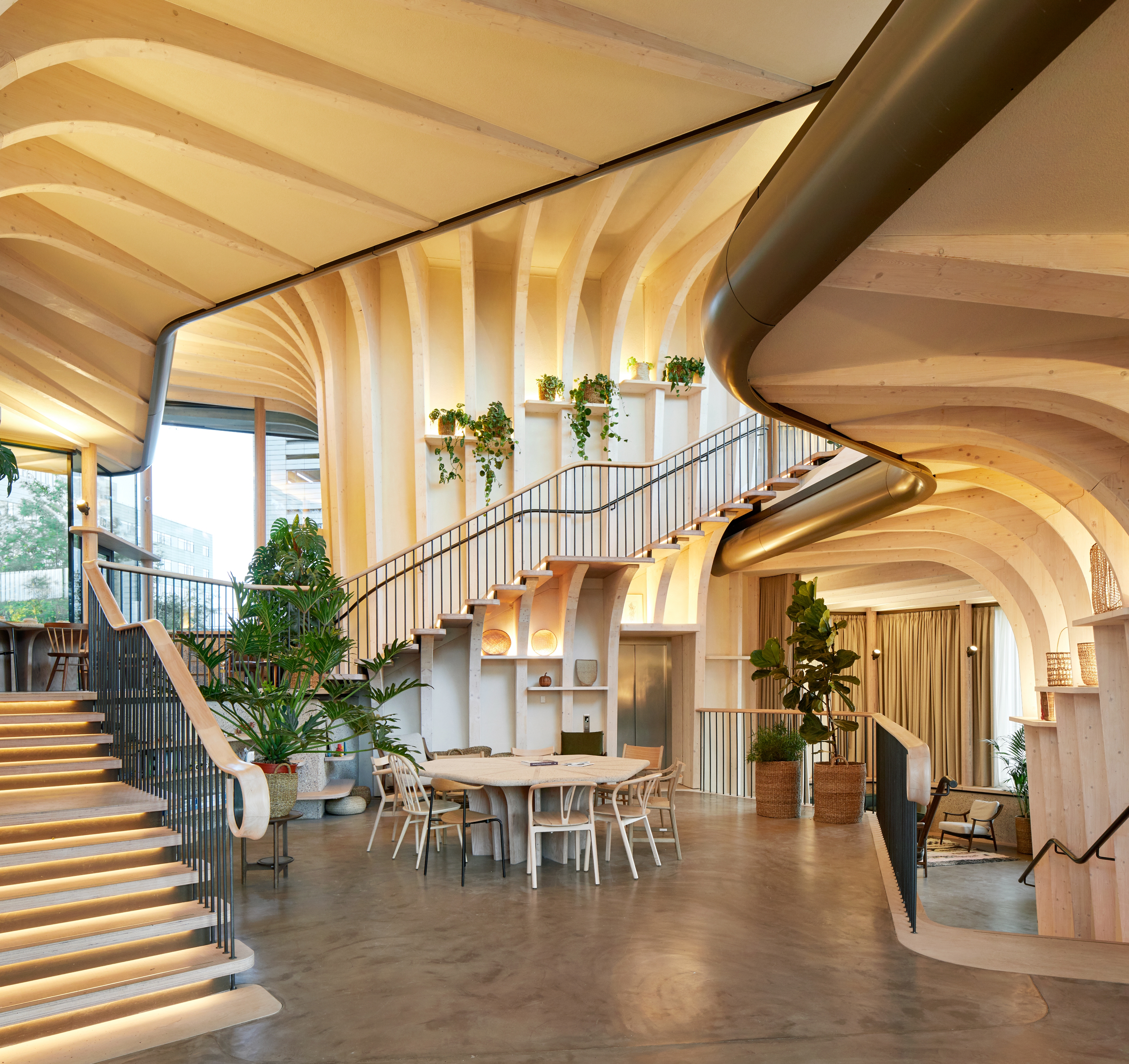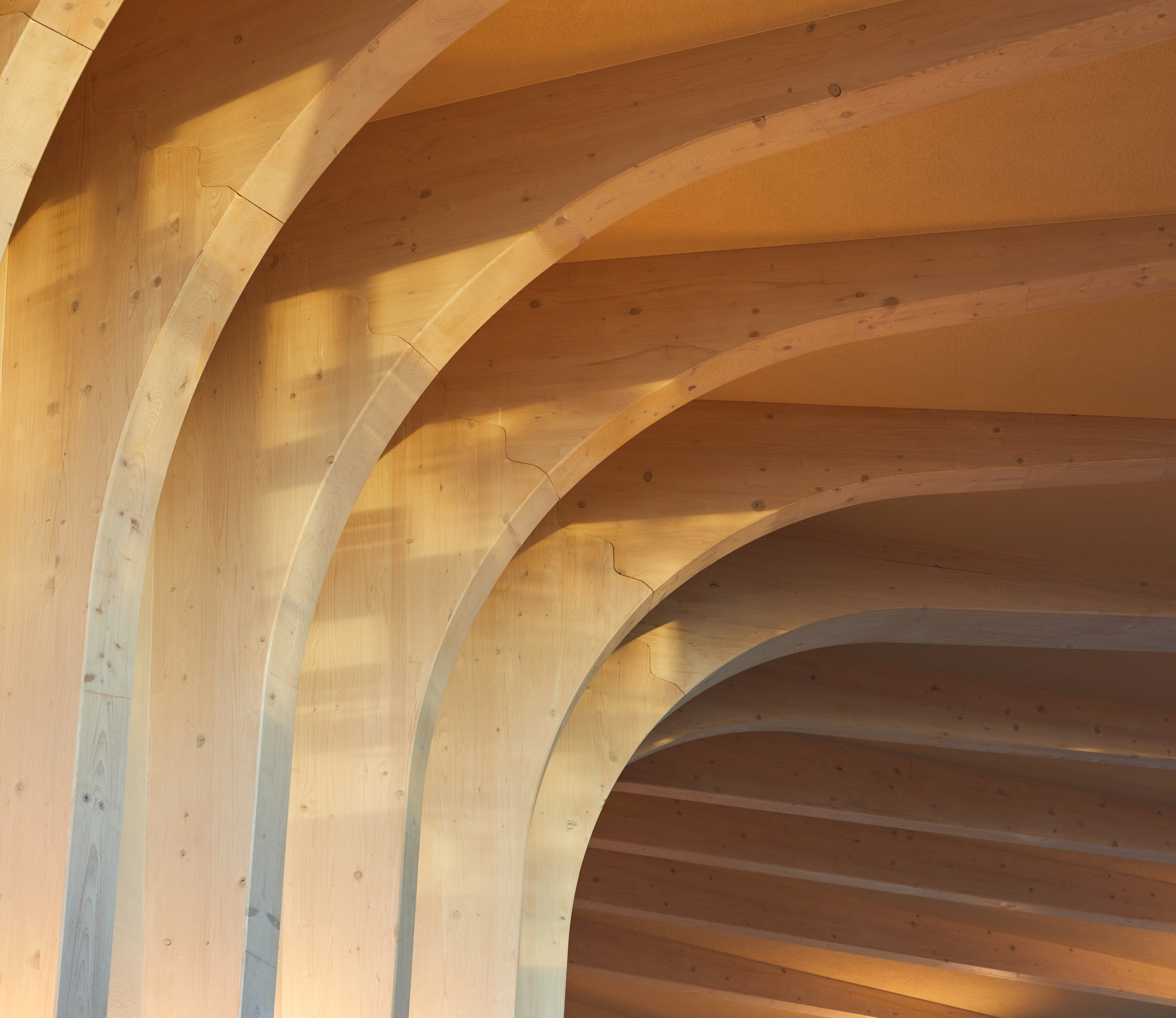Heatherwick Studio completes its first Maggie’s Centre
Located within the campus of St. James’s University Hospital, Maggie's Leeds is the charity's 26th centre in the UK and the first completed healthcare project designed by Heatherwick Studio

Hufton + Crow - Photography
Now numbering 26 in the UK, Maggie's Centres have established their own kind of architectural typology. In these special spaces – that function somewhere between a home, social space and a place of medical care – patients, friends and family of those affected by cancer can receive practical and emotional support. Built primarily within hospital grounds, Maggie’s Centres are renowned for their peaceful architecture and gardens, as much as their exceptional respite.
The late co-founder, designer and writer Maggie Keswick Jencks, drew from her own experiences of having cancer to create this specialised form of care, centred on the belief that people should not lose the joy of living in the fear of dying. Both landscape and spatial design would come to play a crucial role. Her husband, theorist, historian and landscape architect Charles Jencks, who passed away in October 2019, helped devise the network of centres, each created by an architect or studio of note.
Each space has its own aesthetic – Ab Rogers' Royal Marsden Maggie's Centre which completed earlier this year, boasts calculated colour pops to draw attention, while Wilkinson Eyre Architect's space hides in the forested grounds Oxford's Churchill Hospital like a treehouse sanctuary. The newest centre in Leeds – designed by Heatherwick Studio – boasts curving timber beams, plenty of light, and calming wood tones throughout.

‘Our aim was to build a home for people affected by cancer that would be soulful and welcoming, unlike other typical clinical environments,' explains Thomas Heatherwick. ‘By only using natural, sustainable materials and immersing the building in thousands of plants, there was a chance for us to make an extraordinary environment capable of inspiring visitors with hope and perseverance during their difficult health journeys.'
Set across three volumes, the space is designed as a group of large-scale ‘planters' – with foliage sprouting from the roofs – each enclosing a counselling room. These surround a communal kitchen, a library and excercise room. Upholding the belief that great design can help people feel better, the studio encorporated ‘healthy' materials. The use of porous lime plaster, for instance, helps to maintain the internal humidity of the naturally-ventilated building.
As with most Maggie's centres, in line with the late founders' passion for gardening, the cultivated outside space holds particular importance. Head to the roof to discover Balston Aguis' Yorkshire woodlands-inspired landscape. Native English species of plants nestle alongside areas of evergreen to provide warmth in the winter months. Visitors are encouraged to participate in the care of the 23,000 bulbs and 17,000 plants on site.
‘Maggie’s Leeds has been a very special project for me and my team,' Heatherwick continues. ‘We are convinced that there are kinder, more empathic ways to design places that can have powerful impacts on the way that we feel. This is particularly important in the design of healthcare environments, but is so frequently overlooked.'




INFORMATION
Receive our daily digest of inspiration, escapism and design stories from around the world direct to your inbox.
Elly Parsons is the Digital Editor of Wallpaper*, where she oversees Wallpaper.com and its social platforms. She has been with the brand since 2015 in various roles, spending time as digital writer – specialising in art, technology and contemporary culture – and as deputy digital editor. She was shortlisted for a PPA Award in 2017, has written extensively for many publications, and has contributed to three books. She is a guest lecturer in digital journalism at Goldsmiths University, London, where she also holds a masters degree in creative writing. Now, her main areas of expertise include content strategy, audience engagement, and social media.
-
 How to elevate a rental with minimal interventions? Charu Gandhi has nailed it with her London home
How to elevate a rental with minimal interventions? Charu Gandhi has nailed it with her London homeFocus on key spaces, work with inherited details, and go big on colour and texture, says Gandhi, an interior designer set on beautifying her tired rental
-
 These fashion books, all released in 2025, are the perfect gift for style fans
These fashion books, all released in 2025, are the perfect gift for style fansChosen by the Wallpaper* style editors to inspire, intrigue and delight, these visually enticing tomes for your fashion library span from lush surveys on Loewe and Louis Vuitton to the rebellious style of Rick Owens and Jean Paul Gaultier
-
 Out of office: The Wallpaper* editors’ picks of the week
Out of office: The Wallpaper* editors’ picks of the weekFar from slowing down for the festive season, the Wallpaper* team is in full swing, hopping from events to openings this week. Sometimes work can feel like play – and we also had time for some festive cocktails and cinematic releases
-
 A former agricultural building is transformed into a minimal rural home by Bindloss Dawes
A former agricultural building is transformed into a minimal rural home by Bindloss DawesZero-carbon design meets adaptive re-use in the Tractor Shed, a stripped-back house in a country village by Somerset architects Bindloss Dawes
-
 RIBA House of the Year 2025 is a ‘rare mixture of sensitivity and boldness’
RIBA House of the Year 2025 is a ‘rare mixture of sensitivity and boldness’Topping the list of seven shortlisted homes, Izat Arundell’s Hebridean self-build – named Caochan na Creige – is announced as the RIBA House of the Year 2025
-
 In addition to brutalist buildings, Alison Smithson designed some of the most creative Christmas cards we've seen
In addition to brutalist buildings, Alison Smithson designed some of the most creative Christmas cards we've seenThe architect’s collection of season’s greetings is on show at the Roca London Gallery, just in time for the holidays
-
 In South Wales, a remote coastal farmhouse flaunts its modern revamp, primed for hosting
In South Wales, a remote coastal farmhouse flaunts its modern revamp, primed for hostingA farmhouse perched on the Gower Peninsula, Delfyd Farm reveals its ground-floor refresh by architecture studio Rural Office, which created a cosy home with breathtaking views
-
 A revived public space in Aberdeen is named Scotland’s building of the year
A revived public space in Aberdeen is named Scotland’s building of the yearAberdeen's Union Terrace Gardens by Stallan-Brand Architecture + Design and LDA Design wins the 2025 Andrew Doolan Best Building in Scotland Award
-
 A refreshed 1950s apartment in East London allows for moments of discovery
A refreshed 1950s apartment in East London allows for moments of discoveryWith this 1950s apartment redesign, London-based architects Studio Naama wanted to create a residence which reflects the fun and individual nature of the clients
-
 In this Cotswolds home, drama meets minimalism
In this Cotswolds home, drama meets minimalismCotswolds home Hiaven house, with interiors designed by McLaren Excell, is a perfect blend of contemporary chic and calm, countryside drama
-
 David Kohn’s first book, ‘Stages’, is unpredictable, experimental and informative
David Kohn’s first book, ‘Stages’, is unpredictable, experimental and informativeThe first book on David Kohn Architects focuses on the work of the award-winning London-based practice; ‘Stages’ is an innovative monograph in 12 parts